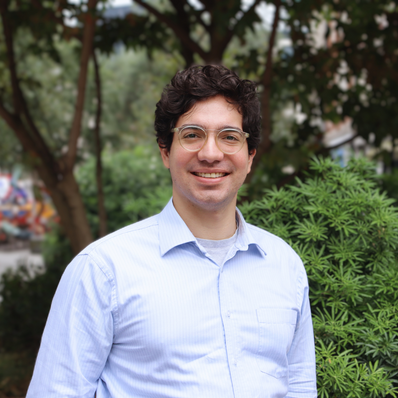Diversifying Telecoms: What are the options for the UK?
On 20 October 2020, techUK convened a second briefing as part of our Diversifying Telecoms event series. Our objective was to explore the realistic options for the UK following the government’s decision to remove Huawei from the nation’s telecoms networks by 2027, thus opening the marketplace to innovative solutions and architectures, including disaggregated networks and Open RAN.
Opening the briefing, Neil McRae, MD and Chief Architect at BT, contextualised the role of Open RAN in the UK market, sharing his understanding of the current state of play. Neil was clear in his estimation that Open RAN is not the only solution for the UK, as it may not meet the demands of our multi-generation networks and existing generations of technology like 2G. What is needed is systems thinking— if the UK takes an end-to-end perspective, specifically on resilience, security, and programmability, then the whole system can change and become open.
Neil cautioned that the UK also needs to be realistic: not only on challenges, but the many benefits that options like Open RAN presents. The UK is a global digital technology leader, host to a wealth of organisations with the right skillset and capabilities to build technology systems. There are opportunities to build programmable networks that can dynamically move where demand is, as well as look across the entire marketplace for innovation. However, it is clear that time presents a challenge, as Open RAN is not as mature as the market requires, and what is needed is a logical long-term strategy that provides stability and the assurance for new equipment suppliers to develop and scale open solutions. That strategy can enable the experimentation necessary for resilient and secure mobile networks in the UK, as well as draw in investment and bolster skills in the sector’s workforce.
A supplier’s perspective
With key insights from a ten-year 5G journey, Barry Walsh from Samsung briefed the event on the transformation of the UK telecoms market, and some of the solutions on offer when embracing open technology. Aligning with BT’s perspective, Barry proposed that in the short term, intervention is necessary to adjust the marketplace, and support suppliers. This intervention will help promote competition in what is currently a contracted supply chain. In the medium term, the UK will need to embrace open technology to enable suppliers to scale and deploy at pace for carrier-class reliability.
Samsung’s experience in 5G is founded in its home market of South Korea, and expanded into other markets such as the USA. Its product line extends from end-to-end, with innovative deployments including a fully virtualised 5G data session for Verizon. Samsung’s work in virtualisation offers its algorithms as software, and can run on any COTS server. Its benefits include a reduction in operational costs, as well as enabling resource pooling, dynamic capacity handling and agility. For Samsung, Open RAN will take time in the UK market, and while there are significant barriers to overcome in managing legacy technology, by embracing the testing required for mission-critical networks, the benefits of open and interoperable equipment will bring huge benefits to the UK market.
New approaches in wireless networks
Ebrahim Bushehri, CEO, Lime Microsystems, walked us through CrowdCell, an open source solution that enables universal wireless connectivity that began as a TIP initiative led by Vodafone. Lime Microsystems utilises Software Defined Radio for Crowdcell, taking on a new approach to the deployment of wireless networks for anybody and everybody, with a “network-in-a-box” solution.
Ebrahim explained that the wireless industry in the UK will benefit from using best practice from the world of computing in enabling major growth of open source initiatives. These initiatives, along with key silicon providers and manufacturers, will play an important role in open radio access networks in the UK. What the UK market will need going forward will be the general availability of microchip technology and open source software, to flatten the telecoms supply chain and reduce the cost of equipment. It will be a long road, but a realistic goal, as CrowdCell has proven.
O-RAN: Opening up the monolithic network stack
Our final speaker was Professor Sachin Vatti, VP of Telco Strategy at VMWare and Chair of the O-RAN ALLIANCE Technical Steering Committee. The O-RAN ALLIANCE was founded in 2018, with the objective of bringing industry together to define an open disaggregated radio access network. Sachin presented a detailed overview of how this disaggregation works in practice, and a status report for each dimension of the RAN.
Currently the RAN is closed, and innovation is relatively slow. Operators work with one “black box” at each site, which limits programmability. What O-RAN proposes is to build a “rainbow coalition” and move away from the current “grey world”.
Today, the most advanced level of disaggregation with real-world deployments is the radio unit, disaggregated by way of an open fronthaul interface. Opening this plane has significant consequences for operators through cost reduction and the opportunity for new players to emerge in the market. Radio units that are deployed currently are open and fronthaul compliant, which is key for the rollout of 5G, as it gives operators flexibility and interoperability. The ecosystem that supplies these radio units is healthy and diverse.
While not as advanced, as compute disaggregation is slightly behind radio, but virtualised network deployments with open software are happening around the world, including the first standalone 5G network in the US by DISH. Further work is required in prototyping the disaggregation of the control plane and management plane to make sure the underlying infrastructure can be delivered in a multi-vendor fashion.
Rounding off the event, Sachin closed with an optimistic view of the development of open networks, pointing to the multiple proof points of hardware disaggregation, the innovation and diversification the O-RAN ALLIANCE is seeing, and the number of new vendors in the global marketplace.
This event was the second instalment in our Diversifying Telecoms series, exploring the opportunities and challenges of diversifying the UK’s telecoms supply chain. If you want to find out more about techUK's work on diversification, please contact Sophie James.




